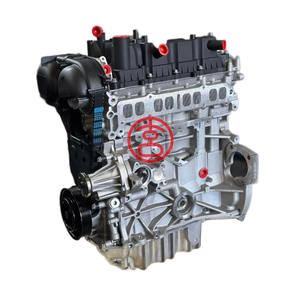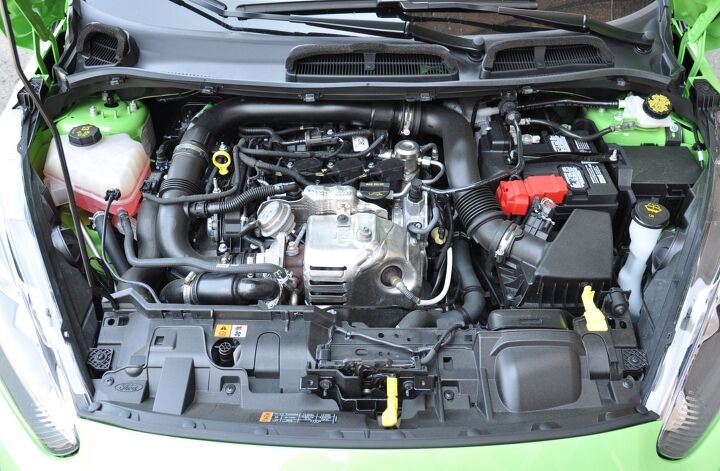The Future of Engines: Technologies Driving Sustainable Power Solutions
As the auto industry browses the imperative shift towards sustainability, the future of engines is progressively defined by groundbreaking innovations. Electric engine developments, along with promising developments in hydrogen gas cells and biofuels, are reshaping the landscape of power services. The introduction of crossbreed systems even more complicates this advancement, presenting both obstacles and opportunities to lower exhausts efficiently. Combined with the combination of fabricated intelligence in engine style, these technological strides raise vital questions concerning their lasting feasibility and influence on typical standards. What might this imply for the industry and customers alike?
Electric Engine Dope
The development of electrical engine developments signifies a pivotal change in the automobile and aerospace markets, driven by the urgent demand for sustainable options to nonrenewable fuel sources. This change is defined by significant developments in battery technology, power electronic devices, and electric motor layout, which jointly improve the performance and performance of electrical engines.
Current developments have actually resulted in the production of lighter, extra energy-dense batteries, such as lithium-silicon and solid-state batteries, which guarantee longer arrays and shorter charging times. Furthermore, improvements in electric motor effectiveness, such as using irreversible magnets and advanced cooling down systems, enable electric engines to operate properly under varying conditions. These improvements not only boost lorry performance yet likewise add to a decrease in overall energy usage.
In addition, the integration of advanced software algorithms has actually maximized power management in electrical lorries, allowing for regenerative braking and anticipating charging techniques. As makers significantly welcome electrical propulsion, the automotive and aerospace markets are experiencing a standard change in the direction of greener modern technologies. This advancement not only meets regulatory needs however additionally lines up with customer choices for eco-friendly transport solutions, solidifying electric engines as a foundation of future sustainable mobility.
Advancements in Biofuels
As the automotive and aerospace markets increasingly prioritize lasting energy sources, developments in biofuels arise as a corresponding remedy to electric engines. Biofuels, stemmed from organic products such as crops, waste, and algae, offer a cutting-edge method for lowering greenhouse gas discharges and reliance on nonrenewable fuel sources.
Recent study has focused on boosting the effectiveness and sustainability of biofuel production. Second-generation biofuels make use of non-food feedstocks, reducing competitors with food supply and minimizing environmental influence. Improvements in synthetic biology have actually made it possible for the engineering of microorganisms to generate biofuels much more effectively, leading to higher returns and lower production expenses.
In addition, the development of drop-in biofuels enables smooth integration into existing framework, enabling a smoother shift for sectors traditionally based on nonrenewable fuel sources. ford fiesta engine. These fuels can be made use of in current engines without alterations, facilitating their fostering across different industries
Investments in biofuel innovation, together with encouraging plans, are essential to drive technology and scalability. As the international neighborhood looks for to fight climate modification, biofuels supply a practical, prompt remedy that lines up with the overarching goal of sustainability in transport and aviation.
Hydrogen Fuel Cell Innovation
An expanding variety of scientists and firms are discovering hydrogen gas cell modern technology as a feasible choice to standard source of power in transport and power systems. This technology converts chemical power from hydrogen right into electrical energy through an electrochemical reaction, with water as the only byproduct, making it an eco-friendly option.
The core of hydrogen gas cells is the fuel cell pile, where hydrogen molecules are divided into electrons and protons. The flow of electrons produces electrical energy, while protons move through a membrane layer to incorporate with oxygen from the air, creating water. This process results in high efficiency and reduced discharges, positioning hydrogen gas cells as an essential gamer in the shift to sustainable power.
Considerable developments have been made in boosting the resilience and efficiency of gas cells, along with minimizing expenses through ingenious production strategies. The development of hydrogen manufacturing approaches, such as electrolysis powered by sustainable energy sources, enhances the sustainability of the total system. As framework for hydrogen refueling expands and manufacturing methods become much more efficient, hydrogen gas cell modern technology holds excellent promise for decarbonizing various sectors, consisting of sturdy transportation and fixed power generation.
Hybrid Solutions and Their Influence
Hybrid systems represent a substantial development in lasting engine modern technology, merging standard interior burning engines with electric propulsion to enhance energy effectiveness and decrease emissions (ford fiesta engine). This dual method allows vehicles to make use of both source of power, making it possible for better adaptability in energy usage and minimizing dependence on nonrenewable reference fuel sources

In enhancement to environmental benefits, crossbreed systems provide customers a feasible transition towards totally electrical vehicles. They ease array anxiousness by incorporating the ease of fuel with the benefits of electrical propulsion, making them an eye-catching alternative for a wider target market.
The Duty of AI in Engine Layout
Leveraging innovative formulas and maker discovering methods, the vehicle sector is significantly incorporating expert system (AI) right into engine style processes. AI enhances the effectiveness and effectiveness of design by analyzing substantial datasets to recognize ideal configurations and efficiency specifications. This capability permits engineers to simulate different operating problems and predict engine actions under several situations, considerably minimizing the time and cost related to typical prototyping techniques.
Moreover, AI facilitates the growth of innovative materials and burning processes customized for sustainability. By enhancing gas performance and reducing emissions, AI-driven designs align with international campaigns targeted at minimizing the carbon impact of automotive engines. Maker understanding formulas can additionally forecast maintenance demands, causing enhanced reliability and durability of engine parts.
Furthermore, AI is critical in the assimilation of electrification innovations, such as crossbreed systems, where it can maximize battery management and energy recuperation processes. As the industry relocates in the direction of more sustainable power services, the function of AI in engine layout becomes progressively crucial, driving innovation and enhancing the performance of future engines. Eventually, the partnership in between AI and engine design proclaims a new period of smarter, cleaner, and a lot more effective vehicle modern technologies.

Final Thought
In conclusion, the future of engines is being formed by a convergence of innovative modern technologies that prioritize sustainability. Electric read the full info here engine advancements, biofuel growths, hydrogen fuel cells, and hybrid systems collectively add to a considerable decrease in discharges and ecological effect. Furthermore, the assimilation of fabricated knowledge in engine layout enhances efficiency and performance. These transformative options emphasize a dedication to creating a cleaner, much more lasting auto landscape, ultimately benefiting both This Site society and the setting.
Electric engine innovations, along with appealing advancements in hydrogen fuel cells and biofuels, are improving the landscape of power remedies. In addition, enhancements in electric motor efficiency, such as the usage of irreversible magnets and advanced cooling systems, enable electrical engines to run properly under differing problems. By enhancing fuel performance and reducing emissions, AI-driven layouts line up with global campaigns aimed at reducing the carbon impact of vehicle engines. As the market moves towards even more lasting power services, the duty of AI in engine style ends up being increasingly vital, driving innovation and enhancing the efficiency of future engines. Electric engine advancements, biofuel growths, hydrogen gas cells, and hybrid systems collectively add to a significant decrease in emissions and ecological impact.
Comments on “Discover the Latest Ford Fiesta Engine Upgrades for Enhanced Power”